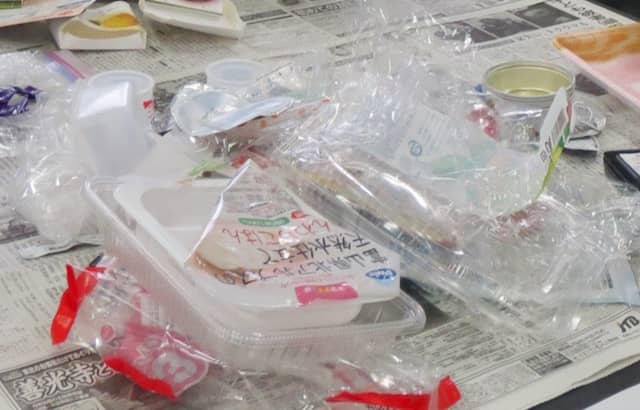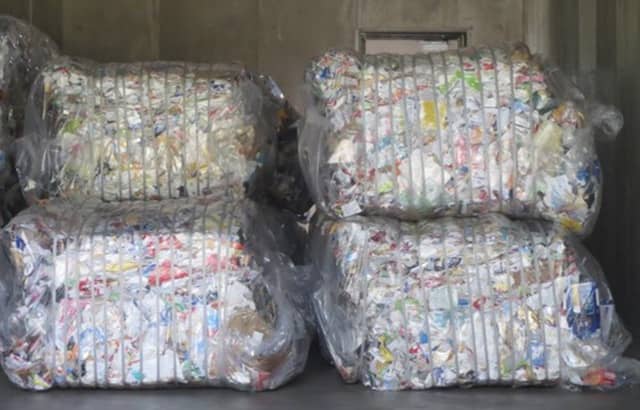Plastic recycling is being promoted to address environmental issues such as increased carbon dioxide (CO₂) emissions and ocean pollution. Toshiaki Sasao has focused on the ‘cost’ of recycling plastic containers and packaging and has attempted to quantify its actual state.
What Causes the Recycling Cost of Plastic Containers and Packaging to Rise?
In light of the escalating environmental challenges posed by plastics, such as ocean pollution and increased carbon dioxide (CO₂) emissions during production and disposal, there is a growing momentum towards plastic recycling. As one strategy, Japan is actively pursuing the collection and recycling of plastic waste. “However, if the recycling process itself results in the emission of more CO₂, it defeats the purpose. Moreover, if the costs are too high, it’s not sustainable. Instead of simplistically promoting ‘recycling = good for the environment,’ we need a perspective that makes decisions based on scientific evidence,” argues Toshiaki Sasao.
Sasao conducts econometric analyses on waste management and material cycles from an environmental and economic perspective. One recent study by Sasao has delved into the costs associated with recycling plastic containers and packaging, excluding PET bottles.
“Japan has been recycling PET bottles since the late 1990s, achieving a high resource recovery rate. However, numerous other types of plastic containers and packaging fall under the category of ‘other plastic containers and packaging,’” he explains. These items include snack and bread bags, plastic bags, food packs and cups, trays, and various bottle types.


There are mainly three main methods of recycling: material (mechanical) recycling, chemical recycling, and thermal recovery. While material recycling, which reuses the material, is commonly favored for plastic containers and packaging, Sasao raises concerns about whether it is the optimal strategy from both environmental and economic standpoints. He emphasizes that we should focus not only on environmental factors but also on economic factors considering sustainability. Thus, Sasao aims to quantify the factors affecting recycling costs for plastic containers and packaging other than PET bottles, a domain that has not previously undergone comprehensive economic analysis.
“In Japan, municipalities collect plastic containers and packaging waste from households and entrust the recycling to contractors determined through bidding. In this study, we considered the successful bid price as the recycling cost, setting factors that could influence this cost, such as the amount of waste collected, the quality of plastic containers and packaging delivered to the recyclers, technical elements such as recycling methods, and geographical factors like the distance from the waste storage facility to the recycling plant.”
Analysis using panel data that combines time series data and cross-sectional data from waste storage facilities and municipalities revealed that continuous successful bidding by the same recycling company and ‘material recycling’ were identified as factors leading to higher bid prices. “The reason for the increase in bid due to continuous bidding by the same company might be the lack of competition in the region, allowing for higher bidding prices due to a monopoly on the contract work,” Sasao speculates. Additionally, factors such as ‘increased transportation distance’ and ‘storage facilities located on isolated islands’ also showed significant differences.
Furthermore, Sasao focused on the impact of the inclusion rate of un-teared bags used for separate collection. “The collected waste bags contain a mix of various plastics. Although designated plastic bags for separate collection are mandatory in some municipalities, these bags are not legally included in ‘other plastic containers and packaging.’ Therefore, a process is needed to tear the bags and remove them after collection. While such a process could increase costs, this analysis showed that it does not affect the bid price. The presence of prohibited items, such as lighters, which is a factor related to quality, also did not significantly impact the bid price,” explains Sasao.
Sasao also made a novel attempt that was not present in existing research, using a model that allows for the estimation of differentiating temporal changes and differences in characteristics of storage facilities and municipalities. “This analysis revealed that the difference in characteristics of storage facilities and municipalities had generally more impact on the rise in bid price than temporal changes.”
Various Measures Are Needed to Promote Resource Recycling from Multiple Perspectives
This analysis suggests that the current system design, which prioritizes material recycling, may not always be the most optimal when considering the sustainable recycling of plastics. “If we can reduce the costs associated with recycling and waste treatment and increase the profits from the sale of recycled resources, it would lead to a reduction in recycling fees and encourage recycling. While this study primarily addressed economic aspects, environmental reports suggest no significant difference in CO₂ emissions between material recycling and chemical recycling or thermal recovery. If we want to balance environmental and economic aspects, we may not need to stick solely to material recycling,” says Sasao.

Reflecting on traditional one-way economic activities from mass production to consumption and disposal, the concept of a circular economy has been proposed, with the European Union (EU) leading the way in legislation and other advancements. “In a circular economy, the focus extends beyond the traditional 3Rs (Reuse, Reduce, Recycle) to reduce resource input and consumption, effectively utilizing existing stock to add value and drive economic growth. Also in Japan, it is necessary to overcome resource recycling issues from various perspectives and find a path to transition to a circular economy,” he adds.
